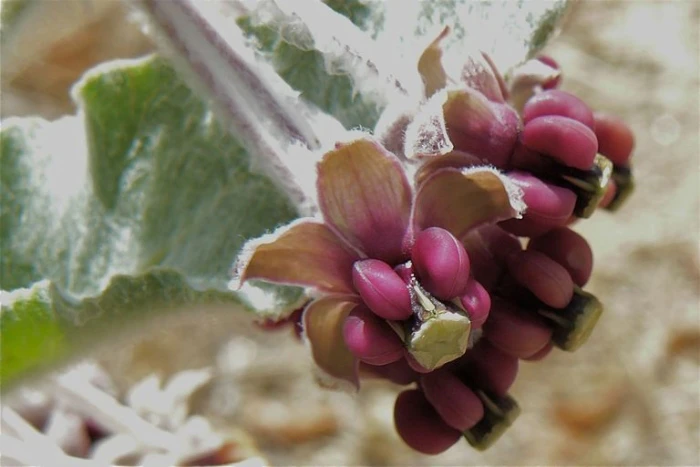California Milkweed
(Asclepias californica)
California Milkweed (Asclepias californica)
/
/

Jean Pawek
CC BY 3.0
Image By:
Jean Pawek
Recorded By:
Copyright:
CC BY 3.0
Copyright Notice:
Photo by: Jean Pawek | License Type: CC BY 3.0 | License URL: http://creativecommons.org/licenses/by/3.0/ | Attribution: 2011 Jean Pawek | Publisher: Calphotos |
























































Estimated Native Range
Climate Requirements for Montgomery Village, Maryland
| This Plant | Your Site | Plant Suitability for Your Location | ||
|---|---|---|---|---|
| • Precipitation | 4" - 68" | 41" | Aquatic | Aquatic |
| • High Temp. | 74°F - 106°F | 87°F | Your summer temperatures are normal for this plant. | Excellent |
| • Low Temp. | 17°F - 47°F | 23°F | Your winter temperatures are normal for this plant | Excellent |
This plant may not grow well at your location - your precipitation is too high.
Summary
Asclepias californica, commonly known as California Milkweed, is a deciduous perennial herb native to California and Northwestern Mexico, specifically thriving in chaparral, open woodlands, and desert scrub. It typically grows to a height of 3-4 feet (0.9-1.2 meters) and a width of 2-3 feet (0.6-0.9 meters). The plant features oblong leaves and clusters of intricate flowers that are a combination of purple, pink, and white, blooming from late spring to early fall. The flowers are particularly showy with their reflexed corollas and starlike arrays of bulbous anthers, making them attractive to pollinators.
California Milkweed is valued for its role as a crucial host plant for monarch butterfly caterpillars, contributing to the conservation of this species. It is drought-tolerant, making it suitable for xeriscaping and low-water gardens. In cultivation, it is often used in native plant gardens, wildlife habitats, and as a border plant. It prefers full sun exposure and can tolerate a range of soil types, provided they have good drainage. While generally low-maintenance, it can be susceptible to aphids and milkweed bugs. Gardeners should be aware that all parts of the plant contain toxic compounds that can be harmful if ingested.CC BY-SA 4.0
California Milkweed is valued for its role as a crucial host plant for monarch butterfly caterpillars, contributing to the conservation of this species. It is drought-tolerant, making it suitable for xeriscaping and low-water gardens. In cultivation, it is often used in native plant gardens, wildlife habitats, and as a border plant. It prefers full sun exposure and can tolerate a range of soil types, provided they have good drainage. While generally low-maintenance, it can be susceptible to aphids and milkweed bugs. Gardeners should be aware that all parts of the plant contain toxic compounds that can be harmful if ingested.CC BY-SA 4.0
Plant Description
- Plant Type: Herb
- Height: 3-4 feet
- Width: 2-3 feet
- Growth Rate: Moderate
- Flower Color: Purple, Pink, White
- Flowering Season: Fall, Spring, Summer
- Leaf Retention: Deciduous
Growth Requirements
- Sun: Full Sun
- Water: Low, Medium
- Drainage: Slow
Common Uses
Bee Garden, Bird Garden, Butterfly Garden, Deer Resistant, Drought Tolerant, Fragrant, Hummingbird Garden, Low Maintenance
Natural Habitat
Native to chaparral, open woodlands, and desert scrub in California and Northwestern Mexico
Other Names
Common Names:
Scientific Names: Asclepias californica
GBIF Accepted Name: Asclepias californica Greene